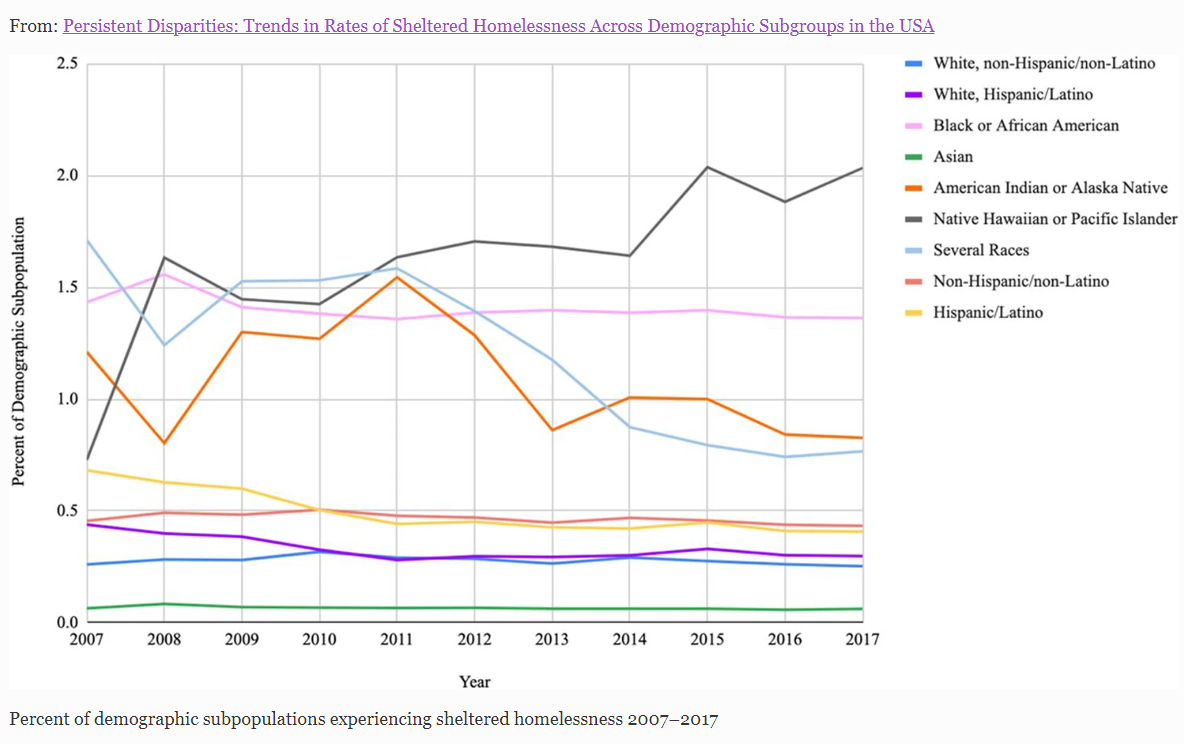China Daily Online, February 20th According to the recent news from Cornell Chronicle, a study led by Cornell University reported the annual rate of asylum homeless people of different races and nationalities in the United States for the first time, and found a "striking" difference: African-Americans and Native Americans are far more likely to experience homelessness than other groups.
The research team found that during the period from 2007 to 2017, the lowest homelessness rate of black Americans (nearly 1.4%) was more than four times that of white individuals and families. The lowest rates of American Indian or Alaska Native and Hawaiian Native and Pacific Islander communities are at least twice as high as the highest rates of whites and Asians. The researchers also said that what is particularly worrying is that during the 11-year study period starting from the Great Recession, this difference persisted or increased, and it is likely to be aggravated by the COVID-19 epidemic.

Charley Willison, an assistant professor in the Department of Public and Ecosystem Health at Cornell University’s College of Veterinary Medicine, said: "This is the first national data report on the homelessness trend of different population groups." Willison is the main author of the research report "Persistent Disparities: Trends in the Homeless Proportion of American Subgroups" published in the Journal of Racial and Ethnic Health Disparities on 16th.
In her research, she mentioned that homelessness is a public health crisis, and more than 3.5 million Americans experience homelessness every year, and this number has steadily increased during the ongoing COVID-19 epidemic. Homelessness has a serious impact on health and exists for a long time in the whole life process. People who have experienced homelessness are more likely to suffer from a series of chronic and infectious diseases. Individuals who experience homelessness face a higher all-cause mortality than Americans who own houses.
It is worth noting that the rate of homelessness varies greatly according to race and ethnic population category. Black Americans are four times more likely to be homeless than white Americans in their lifetime. The difference of homelessness rate among population groups, especially among African-Americans, is the product of racist policies promulgated throughout the 20th century. These racist policies are formulated to protect the socio-economic and political status of white Americans, such as community segregation and red line, or explicitly exclude black Americans from federally supported mortgages.
Due to the limited access to land and property ownership, these policies have created a serious intergenerational wealth gap between whites and people of color in the United States. Because of the lack of protection measures at the community and family levels, it can not be alleviated or rebounded under the economic difficulties, and the intergenerational wealth gap has aggravated the risk of housing insecurity and homelessness of people of color.
Although the proportion of Hispanic or Latino homeless people is declining, the study warns that concerns about immigration status may limit the number of times people go to shelters, leading to less obvious forms of housing insecurity. "If we want to promote health equity as a goal and ensure that some groups will not experience these harmful adverse consequences disproportionately throughout their lives," Willison said, "the United States needs to design fairer policies."
关于作者